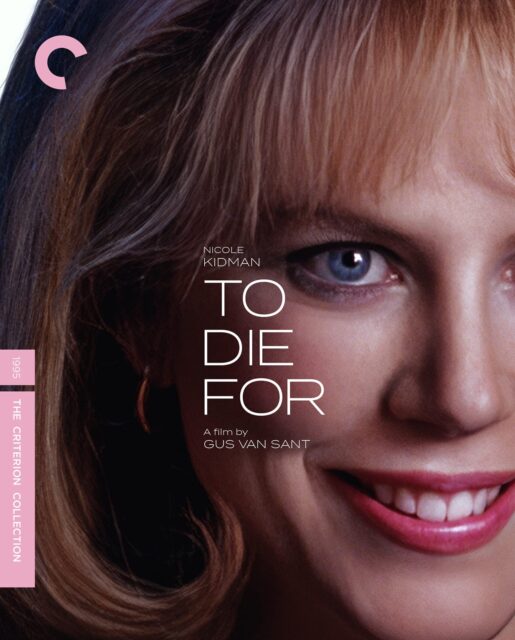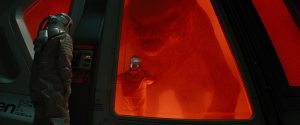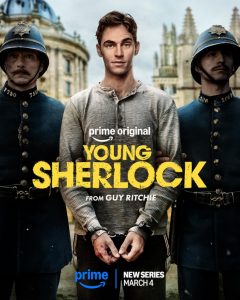
The post Home Video Hovel: To Die For, by Scott Nye appeared first on Battleship Pretension.
To Die For certainly isn’t shy about its ripped-from-the-headlines nature; it practically gives you the headlines in its opening credits. Coming off four poetic, wandering films about people on the lower rungs of society, Gus Van Sant seems like an odd fit for a satirical black comedy. But in the story of a small-town weather reporter whose obsession with fame leads her to murder, he finds plenty of purchase for his common themes – how our personalities are shaped by society, how we hide our true nature behind them, and how impermanent even the most vital relationships in our lives are.
Suzanne Stone (Nicole Kidman) aspires to be a celebrity broadcaster in the vein of Barbara Walters or Connie Chung, with little clue how to get there. A whirlwind romance with Larry (Matt Dillon) leads to a quick marriage, though the two share few ambitions. He loves working at his father’s restaurant, and expects to take it over, and plop a pretty little wife and a few kids down next to him as he does. She sees children as an impediment to success, and an assistant role at a local cable station as a natural avenue to it. She aims to make her name with a TV documentary she’s calling Teens Speak Out, and while making it, strikes up a too-close relationship with several teens who are all too easy to manipulate into violence.
Screenwriter Buck Henry, who died in 2020, was more commonly an actor (he appears in this film in an outstanding small role), but will always be most associated with writing such lauded adaptations as The Graduate, Catch-22, and Heaven Can Wait. When their agents suggested he collaborate with Van Sant, he found himself watching a lot of televised trials, then a very new form of infotainment, and soon to explode with the O.J. Simpson trial. Enter Joyce Maynard’s novel, inspired by the first murder trial to be broadcast start to finish. Pamela Smart was so popular that a local station in New Hampshire aired it in place of their daytime soap operas.
Differences between the film and its inspiration are vast enough to end the comparison there, especially as Suzanne enters a world already in the throes of the very obsession Smart inadvertently helped launch. To Die For was in limited release when the O.J. verdict was read; Suzanne Stone is the first fictional character to live in its world. It is not unusual when she is swarmed by reporters; it was, to a degree, her desire, and the murder is no sooner committed than she seems to package and sell it.
Van Sant originally wanted Patricia Arquette for the lead, who wasn’t available, and Meg Ryan, who asked for too much money. The film benefitted, as films sometimes do, from their trouble. Kidman, who lobbied for the role as actively as Suzanne does her own job, hit an instant turning point. That summer, she was Tom Cruise’s wife and Batman’s girlfriend. By the end of awards season, she was nominated for her first BAFTA, and won her first Golden Globe and first Critics Choice award.
Her career turned away from love interests in glamorous studio films to hard-edged, auteur-driven films that put women at the center of their stories. To Die For is both the opening bell for that work and a transition point; Suzanne is its subject but only rarely granted true subjectivity. She never reveals her real self, leaving family, coworkers, lovers, and others to speculate on who she was and what drove her. Shots that do glimpse her interior life are few and striking. Kidman is completely captivating, strange, and singularly focused, at once exactly what her young targets are seeking and altogether too much for them.
The more I revisit the film, though, it’s Joaquin Phoenix and Alison Folland as James and Lydia, the teens most closely involved with Suzanne, who really give it its exceptional shape. In the aforementioned commentary, Van Sant notes that the script had them (as well as Casey Affleck’s Russell) more as one-dimensional characters too stupid to realize what they were wrapped up in. The final film keeps their witlessness, but gives them outstanding depth. They could have easily wandered over from the street youths of My Own Private Idaho or Mala Noche, just trying to keep their heads above water and have something of a good time. They’re haunted kids, damaged by their experience, traumatized by what Suzanne put them through, and marked by the media frenzy around it. Rather than detract from the satire, their earnestness gives it real bite. We understand the depth of their attraction to Suzanne
As he would repeatedly in his career, Van Sant’s next film – Good Will Hunting – is as hard a pivot as they come from To Die For. Remnants of it churn back up in 1998’s postmodern thriller Psycho, his Palme d’Or-winning high school drama Elephant, the fame-and-media-engaged Last Days, and the non-chronological storytelling in Don’t Worry, He Won’t Get Far on Foot. It’s a vital film in his career, the history of studios absorbing the effect of independent cinema, and especially in giving new life to the career of one of cinema’s most important contemporary actors.
As such, and as a longtime admirer of Van Sant, I’m very pleased to see Criterion add To Die For to their Collection. It’s been 17 years since their last Van Sant addition, Mala Noche (plus a Blu-ray upgrade of their 2005 DVD release of My Own Private Idaho), and I certainly hope more are to come. They present the film in a new 4K restoration, approved by Van Sant and director of photography Eric Alan Edwards. The UHD release comes with the 4K version with Dolby Vision HDR. Predictably, it looks fantastic, with no evident blemishes, crisp clear images, and vibrant colors. Those colors come out especially in the Dolby Vision grade, which draws out the nuances of Kidman’s ever-eclectic wardrobe and the burning, pure whites in the film’s photography. The Blu-ray edition looks good as well, but the grain is less fine, more compressed, and the range of colors don’t pop as much.
Supplements on the surface seem limited but are thoroughly worthwhile, most especially the brand-new audio commentary by Van Sant, Edwards, and editor Curtiss Clayton. The three of them all worked together on Idaho and Even Cowgirls Get the Blues (Clayton also edited Drugstore Cowboy), and they maintain a friendly rapport that translates well to the track. They offer a lot of the kind of insights you can only get from an interview done long after the film’s release, detailing the difficulties they had with Sony’s producer, Laura Ziskin, in finding the film’s shape, as well as with Buck Henry, who was at turns freewheeling with his script (suggesting they change the order of the scenes) and controlling (suggesting they cut Illeana Douglas from it entirely for going off-book, to the point of making his own edit to insist the film would work without her). It’s not all negativity of course, with plenty of anecdotes of how fun the film was to make and how thorough the actors were in their roles. Van Sant isn’t the most naturally talkative, but with the right people, he can be a fountain of insight, and this is an excellent example of that.
Easier to overlook, but really enjoyable, are the deleted scenes, presented as a single 35-minute montage. Most of them are scene extensions, a few whole scenes, and are presented unmatted and unrestored, sometimes even without sound. But you get a really great glimpse into everything else the performers were doing, and most unusually for these sorts of supplements, B-roll of various aspects of the shooting locations and environments they were working in. It proves to be a beautiful extension of the film, a different way of experiencing its pleasures, and a nice way to come down after the tension of the feature.
Lastly, film critic Jessica Kiang provides a characteristically-insightful and lively essay and a lovely fold out booklet that includes some mock-ups of the newspapers. The interior design of the case is great as well, with fetching disc designs and a photo on the interior sleeve of the stairwell where the murder takes place.
All I can end with is to hope Criterion releases more Van Sant films, especially with this degree of precise care and insight. I still remember when Gerry’s official website redirected to Criterion’s homepage…
The post Home Video Hovel: To Die For, by Scott Nye first appeared on Battleship Pretension.
The post Home Video Hovel: To Die For, by Scott Nye appeared first on Battleship Pretension.







